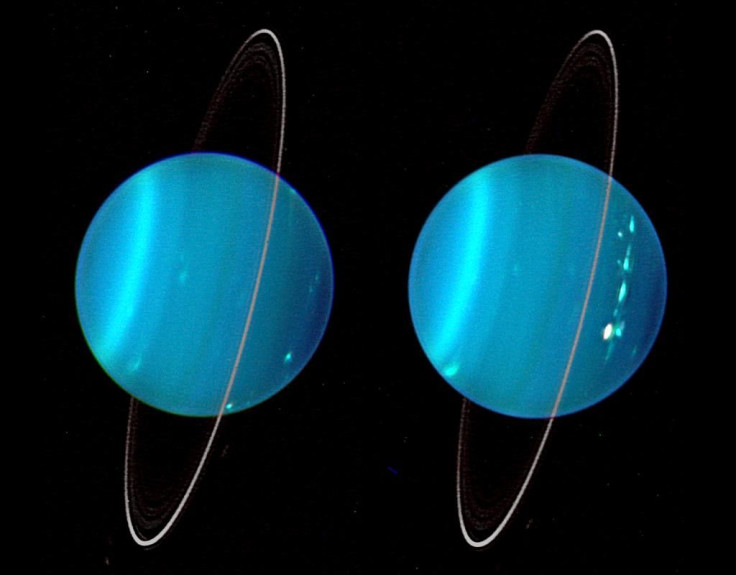Massive Storms Ripping Through Uranus' Atmosphere Leave Scientists Puzzled

Intense storms were observed on the normally bland and featureless surface of Uranus by astronomers earlier this year. Presence of the unexpected storms in the planet’s atmosphere, which resulted in cloud systems so bright that they were visible to even amateur astronomers, has baffled scientists, according to media reports.
Although the storms were first seen by professional astronomers through the Keck Telescope in Hawaii in early August, subsequently, even amateur astronomers were able to discern the storms, which appeared as a bright spot on the surface of the planet, accounting for nearly 30 percent of all light reflected by the rest of the planet, according to media reports.
“This type of activity would have been expected in 2007, when Uranus's once every 42-year equinox occurred and the sun shined directly on the equator,” Heidi Hammel, the executive vice president of the Association of Universities for Research in Astronomy, who was involved in investigating the storms, reportedly said. “But we predicted that such activity would have died down by now. Why we see these incredible storms now is beyond anybody's guess.”
Uranus, the third-largest planet in the solar system, has a diameter four times that of Earth and is wrapped in a thick atmosphere rich in hydrogen and helium. Due to its distance from the sun and the presence of highly-reflective clouds of methane ice, scientists had, until recently, been unable to observe details on its surface.
“The colors and morphology of this cloud complex suggests that the storm may be tied to a vortex in the deeper atmosphere similar to two large cloud complexes seen during the equinox,” Larry Sromovsky, a planetary scientist at the University of Wisconsin, reportedly said. “These unexpected observations remind us keenly of how little we understand about atmospheric dynamics in outer planet atmospheres.”
© Copyright IBTimes 2024. All rights reserved.












